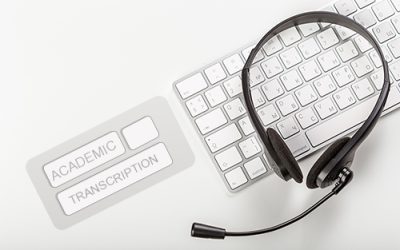 Recent reports indicate that the use of video in higher education is growing rapidly. Technological advancements allow students and educators to access video more easily, faster, and across multiple platforms and devices. Video transcription service transform the lecture audio content into readable notes, enabling students to consume the material at their own pace.
Recent reports indicate that the use of video in higher education is growing rapidly. Technological advancements allow students and educators to access video more easily, faster, and across multiple platforms and devices. Video transcription service transform the lecture audio content into readable notes, enabling students to consume the material at their own pace.
In the educational context, video comprises digitally recorded content with sound and motion that can be stored or streamed live to a variety of devices. The lecturer may or may not be visible and the content can include an animated film, or a demonstration. Using live streaming in education offers the following benefits:
- Allows lecturers to reach students anywhere, anytime
- With video, the best teachers can make their offers available for students across the globe
- Leverages the use of mobile devices for learning and reduces textbook costs
- Transforms teaching as students can watch experts in their field solving problems in real time
- CISCO IBSG estimates that video solutions can reduce teacher attrition by 15 to 20 percent
- Cuts costs for the student and the university
- Universities can optimize building utilization by moving lectures to video
- Promotes interaction and collaboration beyond the classroom
- Encourages diversification of the curriculum
According to a recent survey from Kaltura, a leading provider of video solutions for media, service providers, enterprises, and education, video technologies have had a profound impact on teaching and learning in higher education. The survey found that, with video, educators and students report increases in achievement, engagement and active content creation.
More than 1,000 educators, administrators, students, IT and media staff, and instructional designers participated in the Kaltura survey. The key findings of the study are as follows:
- 99% of institutions reported that their teachers regularly incorporate video in their curriculum
- More than half use video for student assignments, with 21% reporting that more than half of their students actively create video (up from 10% in 2016)
- 73% of higher education institutions use video for remote teaching and learning

Many institutions have taken advantage of video and benefited immensely. CISCO reports that West Texas A&M University (WTAMU) in Canyon, Texas, near Amarillo is one of the most video-enabled institutions in the world. WTAMU adopted pervasive video with the goal to expand its student population from 8000 to 10,000 within three years and create real-time communication with and among students, increase global and on-campus collaboration, and improve the safety and security of its students and faculty. Students use video to capture homework assignments, professors to record lectures, administrators to transmit messages across the campus, and security personnel to track incidents in real time.
The University of California at Berkeley also uses streaming extensively to run webcasts of both lectures and talks by experts. Universities such as Penn State9 have developed ‘video boxes’ which allow lecturers and students to make an instant video recording with their slides by simply plugging in their USB. Audio quality, lighting and uploading to a server are all taken care of unobtrusively. According to a 2015 report from Inholland University of Applied Sciences, the number of students making recordings soared from 80 students a year to 4,500 a semester “because the studio is so easy to use and there is virtually no training needed”.
The demand for video transcription services are also likely to grow along with the adoption of video technology in education. Transcripts contain the full lecture content in a structured format and are synchronized with the video. Adding captions to video lectures makes the content more accessible to a wider audience and to students with hearing disabilities. Using timestamps on video lectures allows users to find the exact audio and video they want to play.
Video has a bright future as an educational tool. Institutions looking to adopt video will need to assess their readiness, applicability of video to their learning environment and IT capabilities to support these applications.



